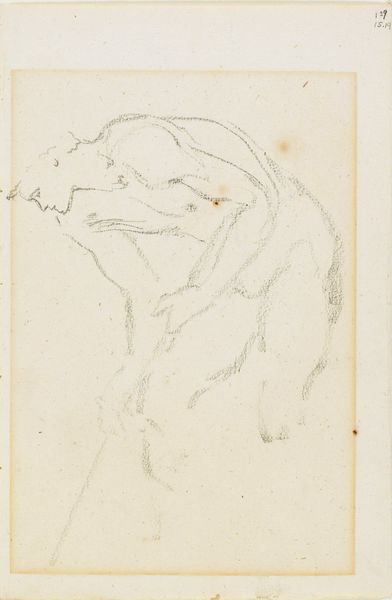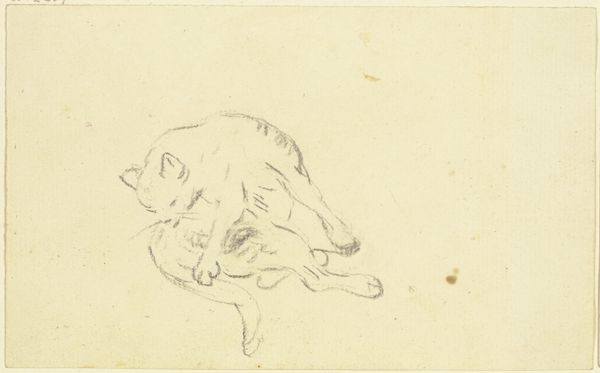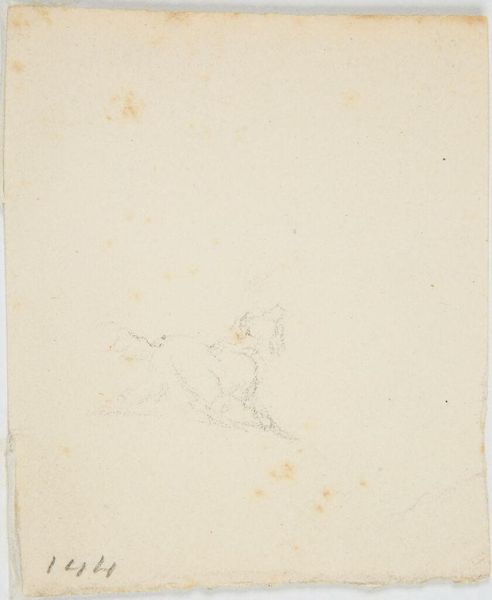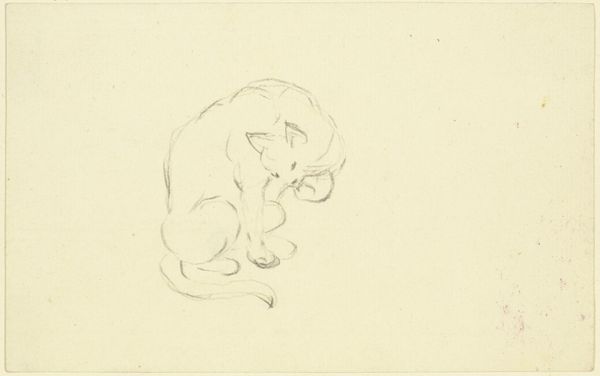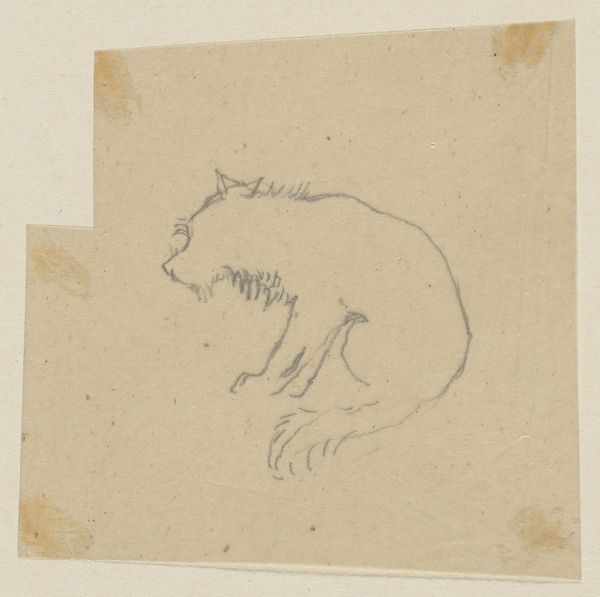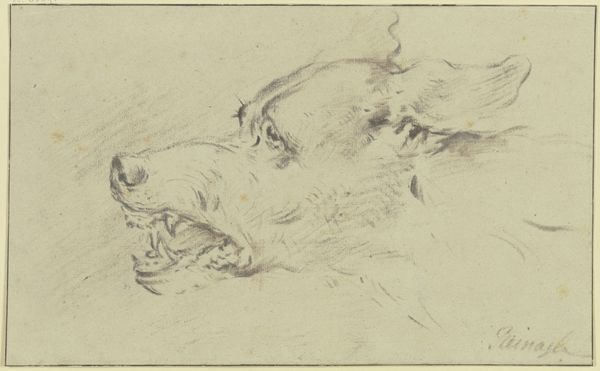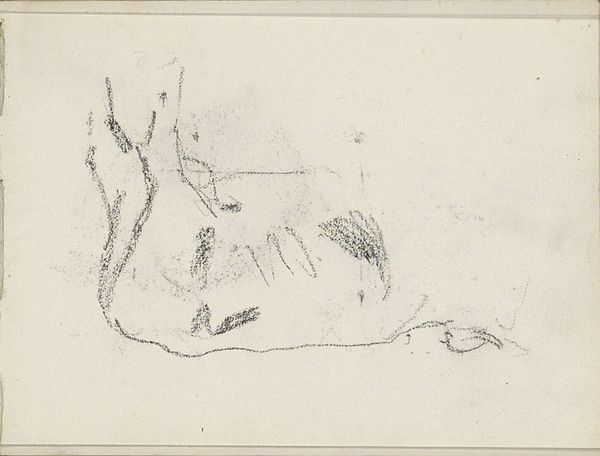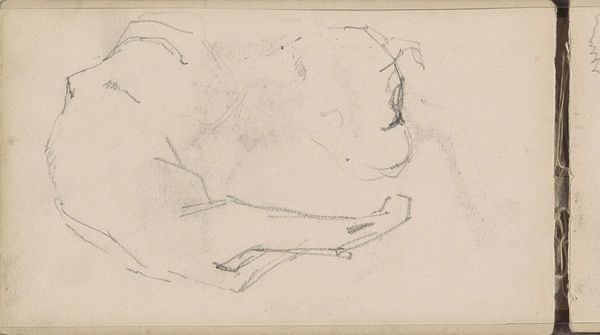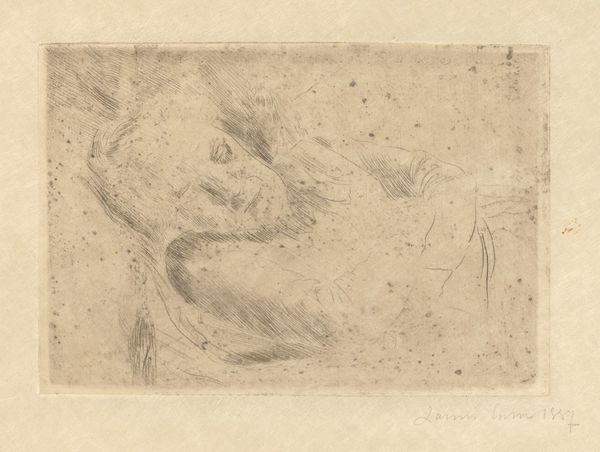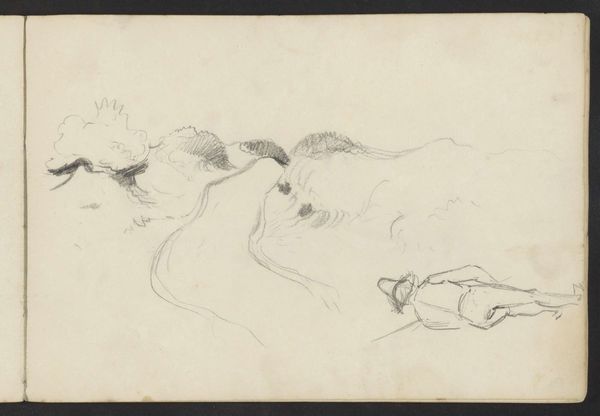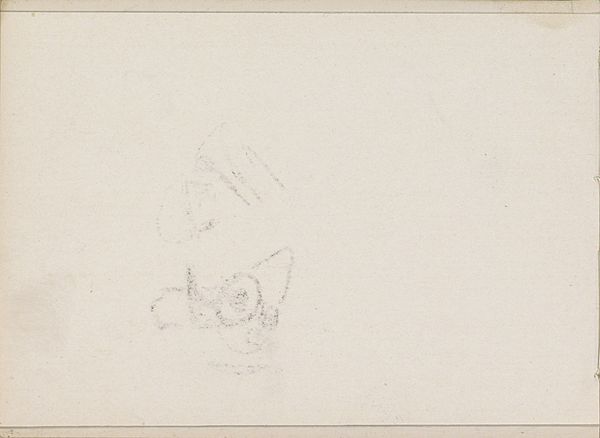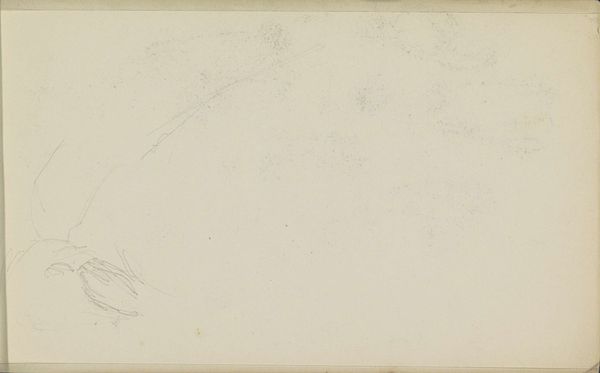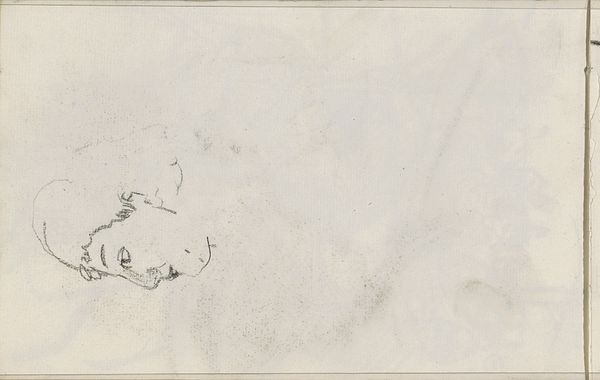
drawing, pencil
#
drawing
#
animal
#
pencil sketch
#
figuration
#
pencil
#
line
#
realism
Dimensions: height 162 mm, width 167 mm
Copyright: Rijks Museum: Open Domain
Curator: Here we have "Sketch of a Tapir," rendered in 1706 by Willem Hendrik Wilhelmus van Royen. Editor: It looks unfinished, almost spectral, a faint image emerging from the paper. Curator: Precisely. The work invites contemplation on line and form, employing simple pencil strokes to suggest volume. Observe how the artist utilizes subtle variations in pressure to articulate the animal's musculature and contours. The sketch focuses less on detail and more on capturing the tapir's overall structure and essence. Editor: But let's consider the material context: the cost of paper, the rarity of seeing exotic animals like tapirs. Paper itself would have been precious. And a pencil, even a basic one, allowed for relative speed compared to inks, making quick studies like this practical for capturing fleeting observations. What does it say about artistic labour and access? Curator: That is a valid consideration, but perhaps it's more useful to look closely at the interplay of positive and negative space in constructing the animal's form. The strategic omission of detail actually amplifies the viewer's interpretive participation, prompting one to complete the image mentally, filling in the spaces to co-create. Editor: I appreciate that interplay. Still, I wonder what Van Royen intended to use this tapir study for? What kind of commission made the study of the exotic creature worthwhile and the material worth using? A natural history study? Did tapirs become more common because Dutch traders were bringing them back as curiosities? Curator: Regardless of intent, the enduring formal quality of this drawing allows it to transcend its original context. The delicate line work and balance of light and shadow speak for themselves, evoking a profound visual experience beyond that moment. Editor: Even just knowing that these economical strokes give shape to not just a tapir, but the economy and opportunity of early global trade! It shows up in how that sketch was born. A study that rewards closer scrutiny of all sorts.
Comments
No comments
Be the first to comment and join the conversation on the ultimate creative platform.
